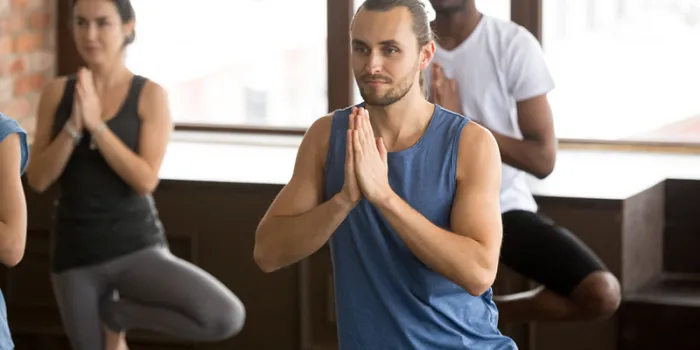When you think of men and exercise, what activities come to mind? Running, cycling and weight lifting, for sure. But what about yoga?
In recent years, more and more men are doing this popular form of mind-body fitness. According to a survey conducted by Yoga Alliance and Yoga Journal, the number of men who said they regularly do yoga went from just 4 million in 2012 to 10 million in 2016.
Yoga can be especially beneficial for men with bleeding disorders, says Eena Kapoor, PT, DPT, a physical therapist at Children’s National Medical Center in Washington, DC, and a member of the National Hemophilia Foundation’s (NHF) Physical Therapy Working Group.
Here are five reasons why men with bleeding disorders should consider adding yoga to their list of regular physical activities:
1. It can improve your balance and posture.
The slow, controlled poses of yoga help balance and posture, which are often affected by bleeding disorders. Kapoor says this is one of the reasons why yoga is considered a beneficial and safe mode of exercise for those who have bleeding disorders.
2. It can increase your flexibility.
Many people discover that, after practicing yoga for a few weeks, they’re able to more easily touch their toes and they feel more flexible in general. This will, in turn, allow you to do other types of physical activities more easily.
3. It can strengthen your bones.
“Because yoga is a weight-bearing exercise, it can also improve bone mineral density, which is often decreased in people with bleeding disorders,” says Kapoor.
4. It can help you manage stress.
The mindful and meditative qualities of yoga can help you relax your mind and feel calmer and less stressed. Studies have also shown that a regular yoga practice can help elevate your mood, reduce anxiety and improve your coping skills.
5. It may help keep your brain healthy.
A 2016 study by UCLA researchers revealed that a three-month course of yoga and meditation was more effective than memory enhancement exercises at managing the mild cognitive impairment that often occurs with aging.
There are some special precautions that people with bleeding disorders need to follow before jumping into a yoga class or trying it at home, says Kapoor. First, it’s important to consult with a physical therapist before beginning any new physical activity. “It’s also imperative to perform yoga in a pain-free range with special attention paid to postural alignment to prevent over-stretching, which could cause a muscle bleed,” she says.
Beginners should find a teacher who understands any health issues they have, such as problem joints that are more susceptible to injury, and won’t push them past their limits. Varying your routine so you’re not always using the same muscles, and taking frequent breaks, is also recommended.
“Some men may need to get factor prophylaxis prior to their yoga practice to protect their muscles and joints,” says Kapoor.

